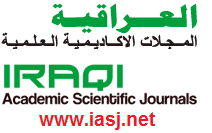Anterior open bite :causative factors and diagnosis
Abstract
The real difficulty behind the treatment of open bite is the
easy relapse, for it has a multifactorial nature. Aim: The aim
of this study is to compare the reliability of two differential
ways in the diagnosis of the open bites, looking out for the
causative factors, aiding in more specific treatment plan and
less relapse. Materials and Methods: A sample of 53 anterior
open bite cases, all in the postpubertal and early adulthood
period (1725 years), was assessed twice, clinically and
cephalometrically. Due to clinical assessments, the whole
sample was grouped as Morphogenetic and Functional
groups. The same sample was also cephalometrically assessed
and grouped as Skeletal and Dentoalveolar using
mandibular plane angle, suspected that the morphogenetic
group clinically matches the cephalometrically assessed
skeletal group in number; also the functional group clinically
matches the cephalometrically assessed Dentoalveolar group
in number. Students ttest indicated a weak agreement
between clinical judgment and cephalometric evaluation (p <
0.001). Results: Unexpectedly, the sample which assessed as
skeletal hyperdivergent cephalometrically, half of it in fact
was classified as functional cases clinically. This misdiagnosis
may lead to inadequate treatment plan, in which relapse
should be highly expected.
Conclusions: These findings highlighted that, it is not enough
to depend on cephalometric evaluation alone to design the
treatment plan for open bite cases. Clinical evaluation is also
important to point out the real causative factors for designing
an adequate treatment plan (i.e., rehabilitation of the soft
tissue bad habits, when needed) to reduce the prevalence of
relapse.











